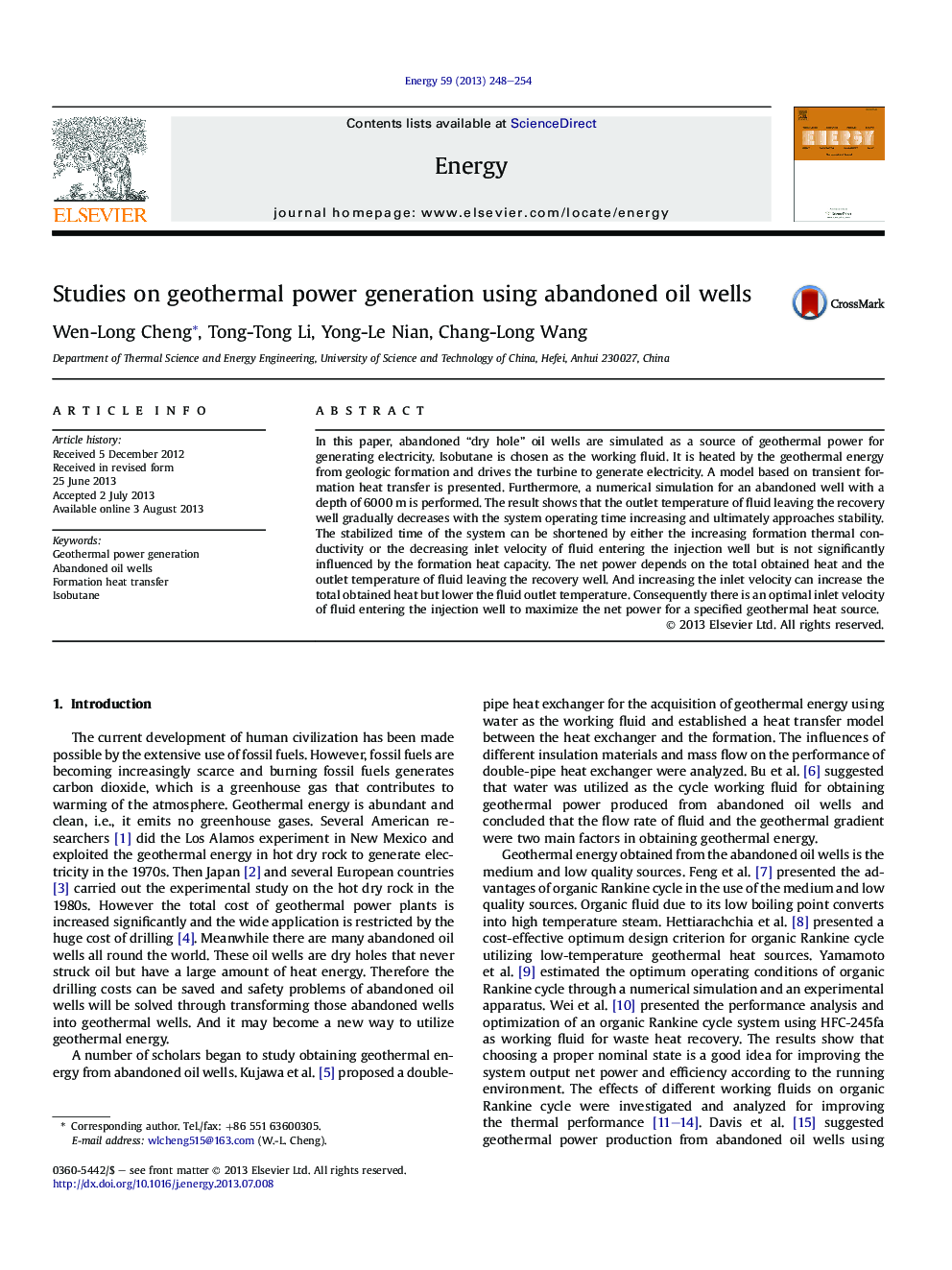| Article ID | Journal | Published Year | Pages | File Type |
|---|---|---|---|---|
| 8079204 | Energy | 2013 | 7 Pages |
Abstract
In this paper, abandoned “dry hole” oil wells are simulated as a source of geothermal power for generating electricity. Isobutane is chosen as the working fluid. It is heated by the geothermal energy from geologic formation and drives the turbine to generate electricity. A model based on transient formation heat transfer is presented. Furthermore, a numerical simulation for an abandoned well with a depth of 6000Â m is performed. The result shows that the outlet temperature of fluid leaving the recovery well gradually decreases with the system operating time increasing and ultimately approaches stability. The stabilized time of the system can be shortened by either the increasing formation thermal conductivity or the decreasing inlet velocity of fluid entering the injection well but is not significantly influenced by the formation heat capacity. The net power depends on the total obtained heat and the outlet temperature of fluid leaving the recovery well. And increasing the inlet velocity can increase the total obtained heat but lower the fluid outlet temperature. Consequently there is an optimal inlet velocity of fluid entering the injection well to maximize the net power for a specified geothermal heat source.
Related Topics
Physical Sciences and Engineering
Energy
Energy (General)
Authors
Wen-Long Cheng, Tong-Tong Li, Yong-Le Nian, Chang-Long Wang,
